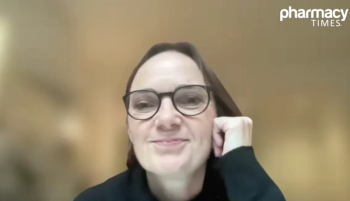ANOTHER MONTH, ANOTHER STUDY WITH FAVORABLE GLP-1 OUTCOMES
Study results published in Alzheimer’s and Dementia last month found that a glucagon-like peptide-1 (GLP-1) could lower the risk of dementia.1 GLP-1 medications have shown promise in diabetes, heart disease, weight management, substance use disorder, and now Alzheimer disease, with likely many more favorable studies and FDA labels to follow. GLP-1s are swinging at nearly every major disease state other than cancer, which may be in play long term if the preventable declines in other diseases are prominent with long duration. These medications are going to bring a generational change in how we treat disease and how medications are accessed, paid for, and marketed.
EYE-POPPING REVENUES, GIGANTIC REBATE LEVELS, AND CONGRESSIONAL INQUIRIES
Current projections have the GLP-1 market growing to half a trillion dollars worldwide by 2032,2 which probably doesn’t account for the many new labels these medications are likely to receive and the new populations who will benefit. And along with high-cost medications exceeding $1000 per month in retail and used among billions of patients will come an even larger boom of rebates back and forth between multiple manufacturers (think back to angiotensin-converting enzyme inhibitors and angiotensin 2 receptor blockers classes of intraclass competition). There are at least 39 new GLP-1 products in the pipeline, and only 7 of those are from the top 20 manufacturers.3 Nontraditional rebate strategies and perhaps rebate avoidance schemes will most certainly emerge in what will be a large game of musical chairs. As such, we are looking at a potential exacerbation of the financial quagmire that already exists with specialty and specialty-lite medications. Congress is now paying attention, with hearings that have already taken place and multiple more to come.4 There is no doubt that some finger-pointing of the type espoused during the “it’s not my fault insulin is so expensive” testimony wars between manufacturers and pharmacy benefit managers (PBMs) will only become more frequent and more prominent. GLP-1s have become the Caitlin Clark and Angel Reese of the PBM industry—highly effective at putting up good numbers and scoring points (patient outcomes) and drawing a lot of attention to PBMs by laypersons or casual observers along the way.
About the Author
Troy Trygstad, PharmD, PhD, MBA, is the executive director of CPESN USA, a clinically integrated network of more than 3500 participating pharmacies. He received his PharmD and MBA degrees from Drake University and a PhD in pharmaceutical outcomes and policy from the University of North Carolina. He has recently served on the board of directors for the Pharmacy Quality Alliance and the American Pharmacists Association Foundation. He also proudly practiced in community pharmacies across the state of North Carolina for 17 years.
A VICTIM OF THEIR OWN SUCCESS, SHORTAGES OPEN THE DOOR TO COMPOUNDING GLPS
The explosion in popularity of GLP-1s led to shortages and unprecedented investments in new factories and production lines, not only to meet demand and sell more product but to also stave off the growth of compounding. This growth of compounding is—at least partially if not principally—driven by rules that allow for copycat products when the medication(s) are on the FDA shortage list.
COMPOUNDED GLP-1S ARE NOW ENDEMIC
Niche, online offerings that cater to cash-paying customers seeking convenience and lower-cost products have grown steadily in the lifestyle and erectile dysfunction space. And why not? If a patient-consumer has a high deductible plan or a prior authorization process that takes months, along with frequent visits to nutritionists and other interventions, before insurance coverage kicks in, why not just pay one-third to one-fifth (or less) of retail for the compounded product? Untold millions of Americans are now accessing GLP-1s through nontraditional means, with unconventional pricing, care delivery, and medications, and they are really happy about it. If the use of these alternative access and financing strategies are now endemic, who’s willing to pay the political price to take it away?
CAN COMPOUNDED GLPS BE TAKEN AWAY WITHOUT A LARGE-SCALE PATIENT CONSUMER UPRISING?
Repossession of a car is contractually and legally appropriate and puts the defaulting consumer in the position of lack of transportation. Getting kicked out of an apartment is contractually and legally appropriate and puts the non–rent-paying resident in the position of scrambling to find a roof over their head. Enforcing the loss of patient-consumer access to compounded products coming off a shortage or scrutinizing alternative products with the same ingredient but different combinations or forms may be regulatorily appropriate and even required by law, should manufacturers sue the government for not enforcing statutes and administrative rules. But for housing, electricity, and other base-level elements of Maslow’s hierarchy of needs, there are rules in place to protect the consumer. In most jurisdictions, the power company can’t just turn off the electricity the day after you miss a payment. Will the same be applied to patients on GLP-1s to transition them to paying 3 or 4 times as much for products and dosing that will be different than what the consumer was happy with? The irony is that the better and more profound the outcomes become with GLP-1s, the more likely calls for protecting access to these alternative financial and product access points to GLP-1s will become.
SOMETHING OR SOMEONE WILL HAVE TO GIVE
This brings us to a question that has been swirling for three-quarters of a century: Do we let the market profit to spurn innovation and multiple market entrants or impose price controls or alternative access through compounding?
These medications are so effective in many conditions and will prevent so many lost years of life and well-being, so we should all be celebrating their discovery and wider availability and distribution. But who pays, how it is paid for, and which products get preference is a policy and business conundrum that is before us at a magnitude we’ve never before dealt with. Consider that the potential $500-billion market that is anticipated within a decade would put its revenue on par with the gross domestic product of Israel, Norway, and Ireland. Clearly, approaching a half-trillion to a trillion dollars in sales across the world would be politically challenging, but consider also: nobody wins if new innovator products are not well-funded during development and fail to come to market in the first place.
REFERENCES
1. Wang W, Wang Q, Qi X, et al. Associations of semaglutide with first-time diagnosis of Alzheimer’s disease in patients with type 2 diabetes: target trial emulation using nationwide real-world data in the US. Alzheimers Dement. Published online October 24, 2024.doi:10.1002/alz.14313
2. GLP-1 analogues market: $47.4B to $471.1B growth forecast (2024-2032). News release. MarketsandMarkets. July 29, 2024. Accessed October 25, 2024. https://www.globenewswire.com/news-release/2024/07/29/2920269/0/en/GLP-1-Analogues-Market-47-4B-to-471-1B-Growth-Forecast-2024-2032-MarketsandMarkets.html
3. Market Overview: GLP-1 Agonists and the Obesity Market. Ozmosi. October 3, 2024. Accessed October 31, 2024. https://www.ozmosi.com/market-overview-glp-1-agonists-and-the-obesity-market/
4. Santoro C. Semaglutide accessibility and affordability addressed at senate committee hearing. AJMC. September 24, 2024. Accessed October 25, 2024. https://www.ajmc.com/view/semaglutide-accessibility-and-affordability-addressed-at-senate-committee-hearing







































































































































































































